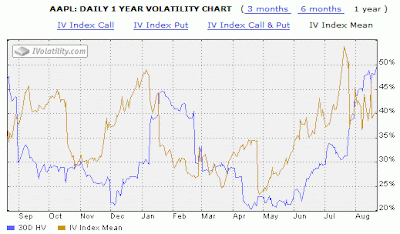Quite often I read articles which tell us that options liquidity can be measured by open interest. Because when options have high open interest, this means there are more people interested in the trade, and as a result, it’s more likely for us to get a better pricing for the trade.
Yes, this is quite true. Normally, the higher the open interest, the more likely we’ll be to trade that option at a narrower spread between bid & ask prices. On the other hand, the lower the open interest, usually there will be a wide spread between bid & ask prices.
However, in many occasions, I found that options with high open interest still have a wide bid-ask spread, i.e. about $0.3 or more.
On the other hand, sometimes options with low open interest might have a narrow bid-ask spread too. When I traded such options, the fillings were also quite fast.
Therefore, to me, open interest is not really the important criteria to decide whether I should trade the option or not.
It’s the spread between bid & ask prices that matters more to me.
Generally, the maximum bid & ask spread I’m willing to accept is $0.20 for ITM options, $0.15 for ATM, and $0.10 for OTM options.
So, although the open interest is high, but if the bid-ask spread is too high, I’ll normally pass that trade. On the contrary, even though the open interest is low, but the bid-ask spread is still acceptable, I may still trade that options.
But of course, ideally I like to trade options with high open interest and narrow bid-ask spread.
Why getting a narrow spread between bid & ask prices is important?
Because this can affect your profitability significantly. Also, it’s important to consider how much the stock price is expected to move versus the bid-ask price spread of the options.
For instance:
You expect a stock to increase by $1 within a very short term. If you buy an ATM Call option (delta is 0.5) and the bid-ask spread is $0.4. That means, just to break even, the stock price will need to increase approximately by $0.80 (=$0.4 / 0.5). Should the stock price moves as expected and rises by $1, you’ll only profit about $0.1 [=($1 x 0.5) – 0.4]. If the stock only increases, say, by $0.6, you will still lose money.
On the other hand, if the bid-ask spread is only $0.1, you only need the stock price to move up by about $0.20 (=$0.1 / 0.5) before you can start to profit. If the stock price does rise by $1, you would gain about $0.4 [=($1 x 0.5) – 0.1].
Related Posts:*
A Chance to Learn from World Class Trading Experts For FREE You Should Not Miss*
Option Chain*
Difference Between Option’s Volume and Open Interest












